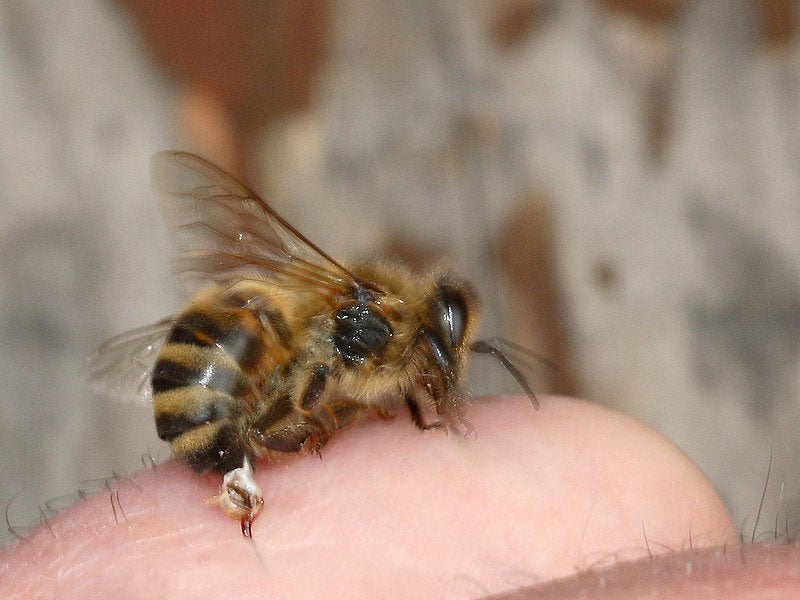Woman dies after alternative 'acupuncture' therapy where live bee stings are used instead of needles
'The risks of undergoing apitherapy may exceed the presumed benefits, leading us to conclude that this practice is both unsafe and unadvisable'

Your support helps us to tell the story
From reproductive rights to climate change to Big Tech, The Independent is on the ground when the story is developing. Whether it's investigating the financials of Elon Musk's pro-Trump PAC or producing our latest documentary, 'The A Word', which shines a light on the American women fighting for reproductive rights, we know how important it is to parse out the facts from the messaging.
At such a critical moment in US history, we need reporters on the ground. Your donation allows us to keep sending journalists to speak to both sides of the story.
The Independent is trusted by Americans across the entire political spectrum. And unlike many other quality news outlets, we choose not to lock Americans out of our reporting and analysis with paywalls. We believe quality journalism should be available to everyone, paid for by those who can afford it.
Your support makes all the difference.A woman died after undergoing an alternative acupuncture treatment which used live bee stings instead of needles.
The 55-year-old had been receiving the "apitherapy" treatment approximately once a month for two years, in an attempt to treat tight muscles and stress.
But during one session, the unnamed woman, who lived in Spain, “developed wheezing, dyspnea, and sudden loss of consciousness immediately after a live bee sting,” according to a report in the Journal of Investigational Allergology and Clinical Immunology.
Although she was taken to hospital and given adrenaline and antihistamines in an attempt to stop the reaction, she died several weeks later after suffering from multiple organ failure.
"Apitherapy", also known as “bee acupuncture” involves a practitioner placing a bee somewhere on a patient’s body.
Then they pinch the insect’s head until the sting emerges. The creatures die shortly afterwards.
Proponents claim it is effective at treating various diseases and alleviating pain.
"We've treated patients with dozens of diseases, from arthritis to cancer, all with positive results," Wang Menglin, a bee acupuncturist, told Australia's ABC News in 2013.
The technique is most popular in China and Korea and despite little evidence of its effectiveness, the technique has been introduced elsewhere.
Reporting on the lady who died, scientists Paula Vazquez-Revuelta and Ricardo Madrigal-Burgaleta, from the Ramon y Cajal University Hospital in Spain, wrote: “Although some benefits of apitherapy have been reported, published evidence of its effectiveness and safety is limited."
Although the woman he been receiving the treatment for a couple of year, the pair said that "repeated exposure to the allergen was found to carry a greater risk of severe allergic reactions than in the general population."
They concluded: “The risks of undergoing apitherapy may exceed the presumed benefits, leading us to conclude that this practice is both unsafe and unadvisable."
A separate review of apitherapy, by scientific journal PLOS One, found that adverse effects were common, including “trivial skin reactions that usually resolve over several days to life-threatening severe immunological responses such as anaphylaxis”.
It reported on another other fatal case, that of a 65-year-old South Korean woman who died in 2011.
Join our commenting forum
Join thought-provoking conversations, follow other Independent readers and see their replies
Comments